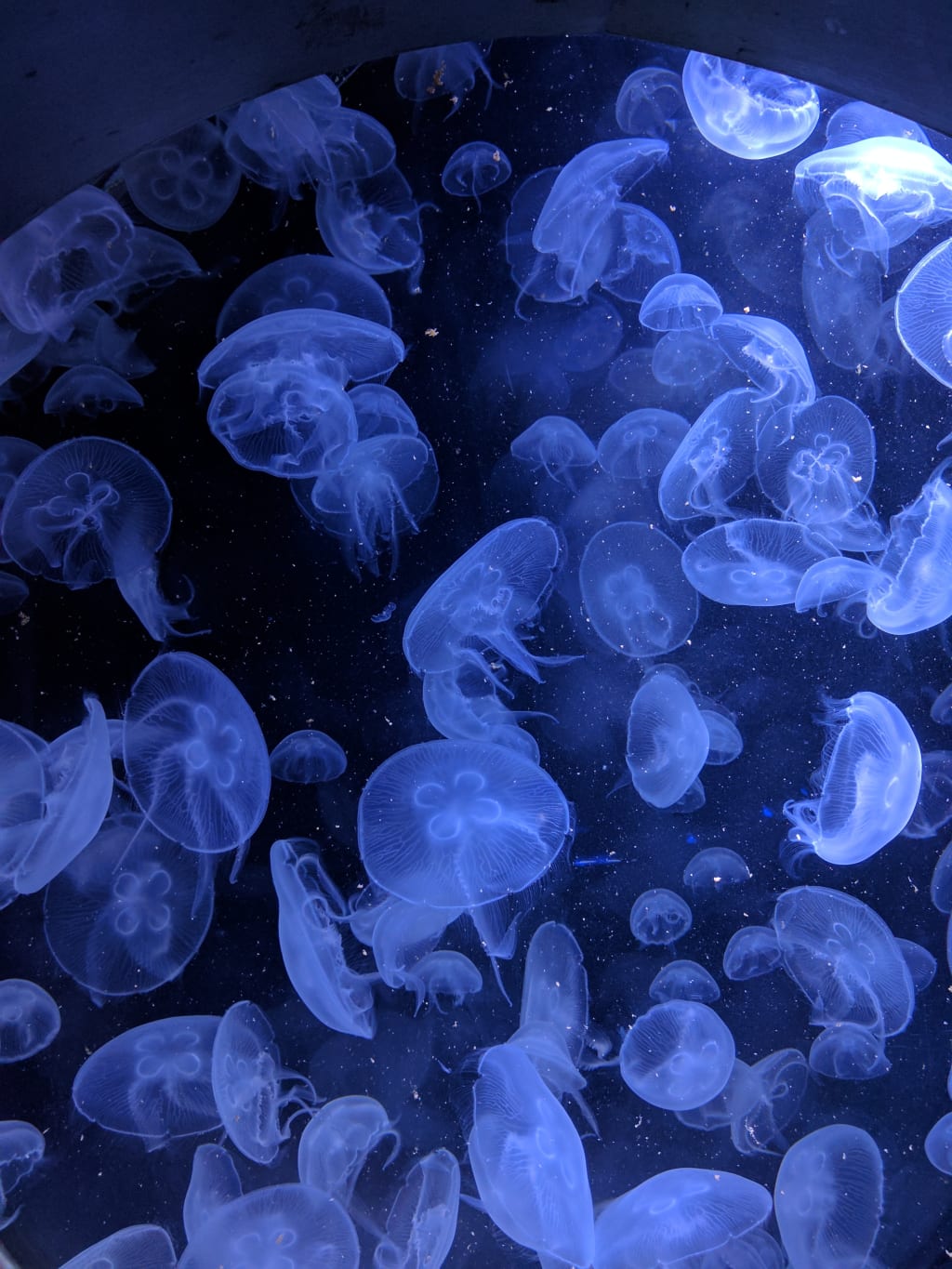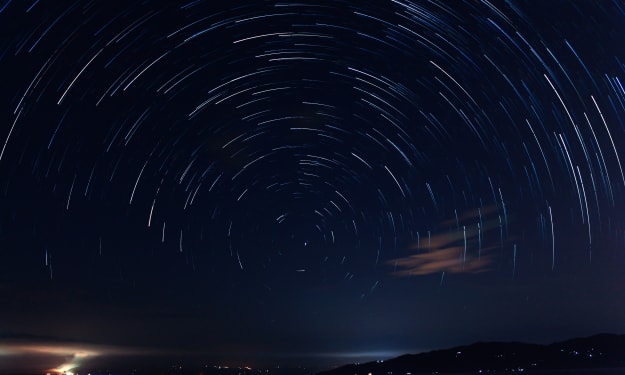Some little-known Antarctic marine life, like a magical door to another world
Antarctic marine life, like a magical door to another world

Cimoli captured a gorgeous, dreamy video in the deep waters of McMurdo Sound in the Southern Ocean, featuring delicate, glowing marine life, some of which are lesser-known Antarctic sea creatures like gateways to another world Magical portal in general.
Filmmaker and scientist Emiliano Cimoli edited a "psychedelic video production" that features delicate, glowing sea creatures, including: close-ups of jellyfish, comb jellies and other soft, transparent sea creatures.
This gorgeous and dreamy video was shot in the deep sea area of McMurdo Bay in the Southern Ocean.
The little-known Antarctic marine life presented in it is like opening a window to a rare marine ecosystem, and it is also a bit like a magical door to another world.
Video source
Cimoli, a researcher at the University of Tasmania in Hobart, Australia, is an amateur wildlife photographer who captured the video while conducting research in Antarctica in 2018 and 2019.
Cimoli was inside the researchers' field tent and found a large viewing hole cut into the sea ice.
He sees this as an opportunity to send cameras beneath the ice, some tethered to the surface and others attached to submersible robots, in search of elusive sea creatures that are often difficult to observe in their natural habitat .
However, he was testing sensing equipment to monitor algae living under sea ice, Cimoli said. "Ice algae play a vital role in polar marine food webs and ecosystems, and the research theme of the expedition is constantly changing. to investigate their abundance and physiology under light conditions."
Cimoli edited the video during the COVID-19 lockdown and posted it on YouTube and Vimeo in March 2020.
In some footage, surface ice above the head can be seen. Other clips show the sea floor sprinkled with pink starfish.
But the most dramatic scene is when the jelly floats and undulates in the dark water.
In one stunning shot, there's a jellyfish's body gently pulsing with ripples; and orange globules of small parasitic crustaceans called super-amphipods, clustered around it.
This opens a window into lesser-known marine ecosystems, "kind of like a magical portal to another world," Cimoli said in the statement.
research process
Gerlien Verhaegen, a postdoctoral researcher at the Japan Marine-Earth Science and Technology Agency in Kanagawa Prefecture, Japan, discovered the amazing marine life beneath Antarctic ice in hypnotic footage.
They're gelatinous, transparent-bodied exotic jelly-like sea creatures that are illuminated by the shimmering light inside, and some of the food they've eaten recently can even be seen tumbling and drifting in their bellies. He thinks the footage could be a goldmine for biologists studying jelly.
So he removed the jellyfish from the water, but because the delicate structures in the soft bodies of jellyfish and ctenophores are difficult to preserve, the study authors determined the species in the video by comparing them with naturalist illustrations and descriptions.
"Our study constitutes the first optical-based survey of gelatinous zooplankton in the Ross Sea and the first to use observations of live jellyfish in a Southern Ocean habitat to characterize and document species," Verhaegen said in a statement. Some behavioral studies of jellyfish and ctenophores, many of which date back to the early 20th century.
The researchers identified 12 species of gelatinous animals from particular details in the video, but not all of them matched what was described in the scientific literature, with two jellyfish and three ctenophores not yet known to science.
Why study Antarctica
As we all know, Antarctica is the only piece of land on earth that has not been exploited by humans. As the last visible landlock on Earth, it has many fascinating resources.
Not only does it have a wide variety of natural resources, but it also has a large amount of fresh water. First of all, what attracts us the most is the mineral resources of Antarctica. He has about 500 billion tons of coal reserves, and Antarctica has the world's largest iron ore reserves.
The Antarctic continent is rich in iron ore reserves with high iron grades. It is known as the "Iron Mountain of Antarctica". It can be developed and utilized in the world for 200 years, ranking the forefront of the world. The second thing that attracts us is the marine biological resources.
So people really want to develop and design the interior of Antarctica. If Antarctica is ever developed and designed by humans, many of the glaciers on Antarctica could turn into water and enter the deep ocean, eventually pushing the world's water level even higher and potentially engulfing most of the islands and landmasses.
By then, animals and humans will be on the brink of extinction. So once the Antarctic continent is developed and designed by us, the sixth mass extinction will be very close to us.
However, if we don't develop and design Antarctica, people will feel the itch again. The reason is that there are so many secrets in Antarctica. It is the most magical land on earth.
In the vast Southern Ocean, there is a vibrant world of creatures. The species and biomass of marine life are considerable, especially whales, seals, krill, fish and seabirds are more abundant.
Statistical analysis shows that the Antarctic continent has about 14 million hectares. However, the combined area of exposed islands and all-visible soil is unlikely to reach 7%, where about 72% of the world's available freshwater is stored.
It is estimated that this amount of fresh water can be consumed by all human beings for 7500 years. Therefore, Antarctica is the largest reservoir of freshwater resources for mankind, with excellent water quality and no pollution.
Antarctic legend
Since its gradual appearance on Earth, Antarctica's ice has also been continuously deposited. According to scientists' calculations, the average thickness of Antarctica at this stage is 2,000 meters, but some areas have walls as thick as 4,800 meters, which is equivalent to half the altitude of the Himalayas. In other words, there's a large indoor space under the Antarctic ice sheet, but no one knows what's there.
In the past, a communications satellite took a set of photos in Antarctica that produced objects suspected of being UFOs, but later, when a scientific investigation team went to the field to investigate, nothing was found.
In addition, some people have demonstrated that they have seen the presence of UFOs in Antarctica. Therefore, many believe that Antarctic ice may be an industrial base for extraterrestrial civilizations. Of course, this is just a guess.
In addition to arguing that the Antarctic ice sheet is an industrial base for other planets, some also believe that there is a construction tunnel under the Antarctic ice sheet to the inner world of Earth.
In order to better uncover the secrets under the Antarctic ice sheet, a team of scientific elites rushed to Antarctica to conduct a drilling project above the ice shelf. As a result, a team of scientific elites discovered an underground lake.
Thousands of strains of microorganisms have been found in it through the exploration of scientific researchers. Therefore, they argue that the subterranean lake is a very active ecosystem, a finding that also makes us understand that we may be underestimating the adaptability of life to the natural environment.
Also, the Antarctic ice sheet may not be as extreme as you see it. Chances are there are some lives you've never seen before.
And the little-known Antarctic marine life presented in this short video is like a "magic door" to another world.
According to the study, the images in this "psychedelic video production" will also be used to train computer algorithms to identify jellyfish species, a feat that can only be achieved if the training database contains high-quality photos or videos that the computer can learn from. .
"When curiosity is triggered, it prompts people to engage deeply and learn about something," Cimoli said. After gazing at the otherworldly marine environment beneath the sea ice, one may want to learn more about this mysterious remote habitat.
About the Creator
sayre laylah
Tired of monotonous climbing moves, but every step is close to the top
Enjoyed the story? Support the Creator.
Subscribe for free to receive all their stories in your feed. You could also pledge your support or give them a one-off tip, letting them know you appreciate their work.






Comments
There are no comments for this story
Be the first to respond and start the conversation.